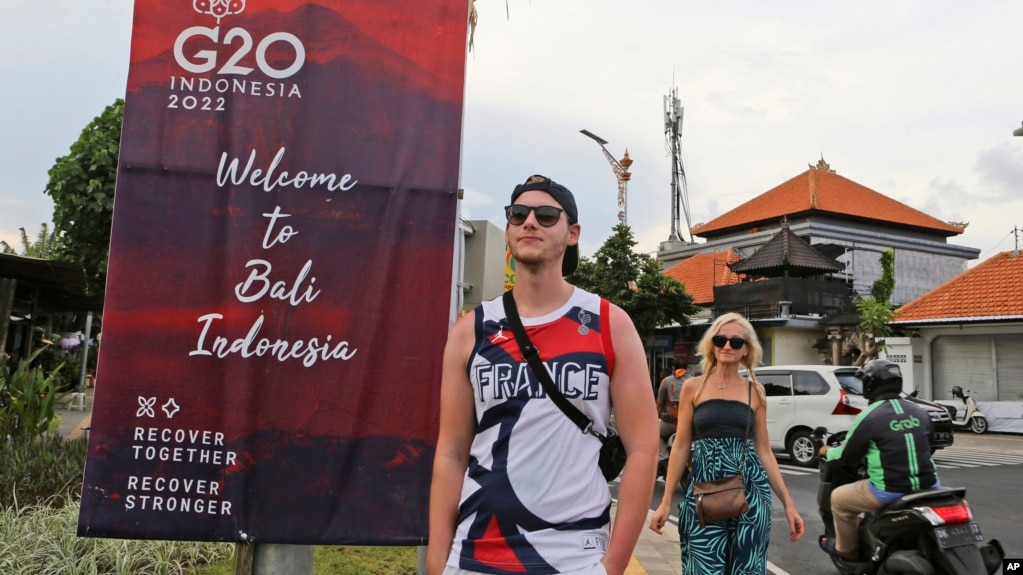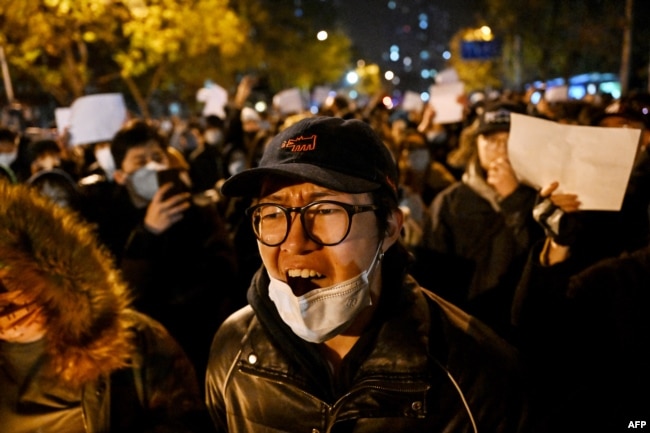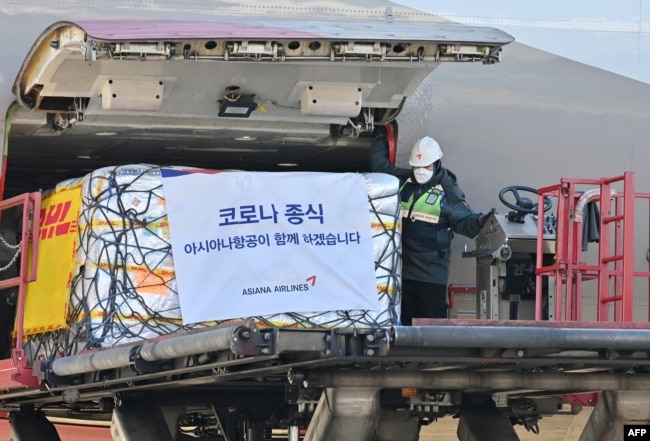Learning to Live with COVID

After two years of pandemic emergency, could 2022 be the year the world finally learned to live with COVID-19?
From Asia to Africa, countries re-opened for business and visitors following developments in COVID-19 vaccination and treatment.
On New Year’s Day, Portugal’s President Marcelo Rebelo de Sousa announced the easing of COVID-19 restrictions. He said his country had “moved into the endemic” period of the pandemic. Endemic means a disease has settled in a place for years to come.
Britain’s Prime Minister at the time, Boris Johnson, took similar action later that month. Announcing an end to requirements for face coverings, he said, “We will trust the judgment of the British people and no longer criminalize anyone who chooses not to wear one.”
The moves were the start of re-opening borders to members of the European Union and then to vaccinated travelers from around the world.

FILE - Tourists walk across elevated walkways outside St. Mark's Basilica on St. Mark's square in Venice, Italy, Sept. 27, 2022. (Photo by ANDREA PATTARO / AFP)
Australian officials, however, denied entry to Novak Djokovic, the world’s top tennis player, in January. The country’s health officials ruled that Djokovic failed to meet the country’s vaccination requirement.
The World Health Organization (WHO) added in January that countries could consider easing COVID rules if they had high vaccination rates and strong healthcare systems.
In June, South Africa lifted its COVID restrictions. Visitors can come and go without vaccination papers or testing. Other African countries including Madagascar, Egypt, and Botswana soon followed.
Many Asian countries opened back up in 2022 as well. Thailand, Vietnam, India, Japan, South Korea, and Indonesia all eased restrictions and welcomed visitors.
China was the last major country with severe COVID restrictions remaining. During the 2022 Beijing Olympics, it locked down millions of its people and isolated visitors in restricted areas.
The zero-COVID policy led to rare protests in several cities after at least 10 people died in a building fire in the western city of Urumqi last month. Reports of the fire led to angry questions about whether firefighters or victims trying to escape were blocked as a result of anti-virus measures.
A week later, China announced that it would ease some restrictions and step up a vaccination campaign. Experts expected China to reopen sometime next year.

FILE - Protesters march along a street during a rally for the victims of a deadly fire as well as a protest against China's harsh Covid-19 restrictions in Beijing on November 28, 2022. (Photo by Noel CELIS / AFP
Paxlovid and bivalents
In the State of the Union speech to Congress in March, American President Joe Biden said, “Last year COVID-19 kept us apart. This year we are finally together again.”
He noted that the gathering did not require face coverings. That was possible, he said in his speech, because of the progress in vaccine and anti-viral treatment efforts.
As the Omicron version of the virus was quickly spreading around the world, United States health officials approved the first drug against COVID-19 that could be taken at home.
The drug, Paxlovid, is a pill made by the U.S. drug company Pfizer. All the earlier approved drugs against COVID require injection directly into the blood by healthcare professionals.
Pfizer made Paxlovid available at low prices to the poorest countries.

FILE - A South Korean worker unloads cargo containing Pfizer's antiviral COVID-19 pill, Paxlovid, at a cargo terminal of the Incheon International Airport in Incheon on Jan. 13, 2022. (Photo by JUNG YEON-JE / POOL / AFP)
Dr. Gregory Poland of the Mayo Clinic in Minnesota spoke about Paxlovid at the time. He said: “You’re looking at a 90 percent decreased risk of hospitalization and death in a high-risk group…”
The high-risk group includes older people and those with conditions like being severely overweight or having heart disease.
In August, U.S. health officials approved new vaccines made by Pfizer-BioNTech and Moderna. The new shots are called “bivalent.” They are designed to protect against both the earliest and newer versions of Omicron called BA.4 and BA.5.
The approval of the updated vaccines is the first step toward dealing with COVID-19 vaccine updates in the same way as yearly flu shots. In this case, health officials ordered vaccine makers to make changes and to target the latest coronavirus versions without depending on human testing.
The U.S. was not the only country with plans to update COVID-19 vaccines. Health officials in Britain and other European countries also offered “bivalent” shots to target different versions of the virus.
https://learningenglish.voanews.com/a/learning-to-live-with-covid/6866737.html